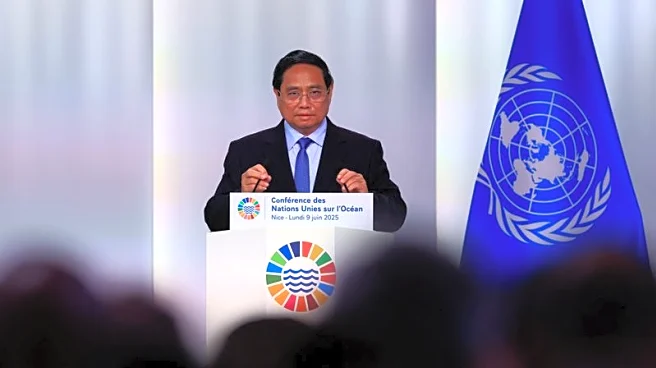What's Happening?
The federal rooftop solar tax credit, which has been instrumental in helping U.S. homeowners install solar panels, is set to expire on December 31. This change is part of the One Big Beautiful Bill signed by President Trump in July. The tax credit, averaging $8,000 last year, has supported the installation of thousands of megawatts of solar panels across the country. The expiration of these credits is expected to increase out-of-pocket costs for solar installations, potentially slowing the pace of new installations. The Trump administration has also imposed tariffs on solar panels and components from China and Southeast Asia, further impacting the industry. Despite these challenges, experts believe that the solar industry can adapt and continue to grow without subsidies, as solar technology is now mature enough to stand on its own.
Why It's Important?
The expiration of the solar tax credit is significant as it may lead to higher costs for consumers in the short term, potentially slowing the adoption of solar technology. However, it could also drive the industry towards greater efficiency and lower costs in the long run. The removal of subsidies might expose inefficiencies and predatory practices within the industry, prompting a shift towards more transparent and competitive pricing. This change could ultimately benefit consumers by reducing installation costs and making solar energy more accessible. The transition away from subsidies is expected to encourage innovation and operational efficiencies, which are crucial for the industry's growth and sustainability.
What's Next?
The solar industry is expected to face a period of adjustment as it adapts to the end of federal subsidies. Analysts predict that the industry will start growing again by 2028, with homeowners installing more solar capacity annually than in a subsidy-driven future. The focus will likely shift towards improving business practices and reducing soft costs associated with solar installations. Initiatives like SolarAPP+, a streamlined permitting platform, could play a key role in reducing costs and accelerating the adoption of solar technology. The industry will need to navigate these changes while addressing the challenges posed by tariffs and regulatory barriers.
Beyond the Headlines
The expiration of the solar tax credit highlights broader issues within the solar industry, such as inflated dealer fees and sales commissions that have contributed to higher costs for consumers. The removal of subsidies could lead to a more efficient market, where consumers benefit from lower prices and better business practices. This transition may also prompt a reevaluation of government support for emerging technologies, balancing the need for incentives with the goal of fostering a competitive and sustainable industry.











